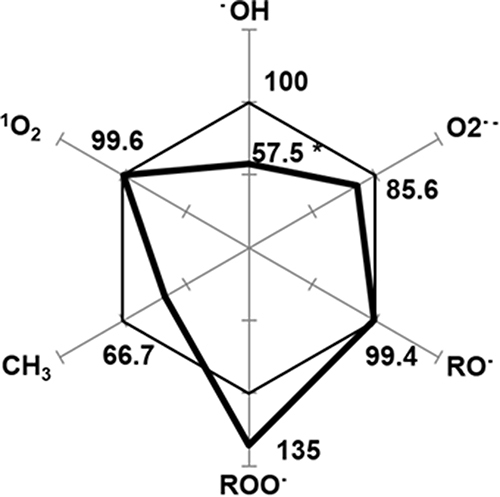Figures & data
Table 1 Measurement Conditions of Each Free Radical Scavenging Capacity
Table 2 Patients Characteristics
Table 3 Free Radical Scavenging Capacity and Severity of COPD
Figure 1 A radar chart illustration of the relative scavenging capacity data listed in . Percent changes in the capacity of COPD patients are shown in each free radical species. *p < 0.05 vs control subjects.

Table 4 Relationship Between Free Radical Scavenging Capacity and Goddard Classification
Table 5 Relationship Between Free Radical Scavenging Capacity and Exacerbation Frequency
Figure 2 A radar chart illustration of the relative scavenging capacity. Percent changes in the capacity of COPD patients are shown in each free radical species. (a) Survived patients with COPD, (b) Deceased patients with COPD. *p < 0.05 vs control, #p<0.05 vs survived patients with COPD.

